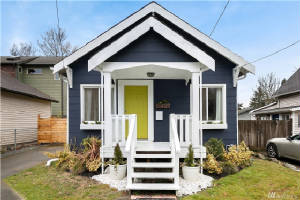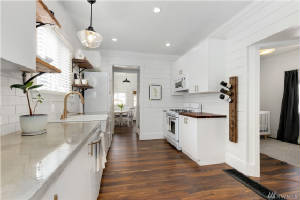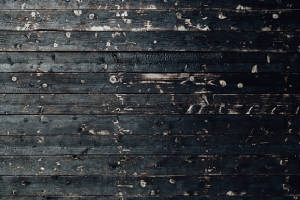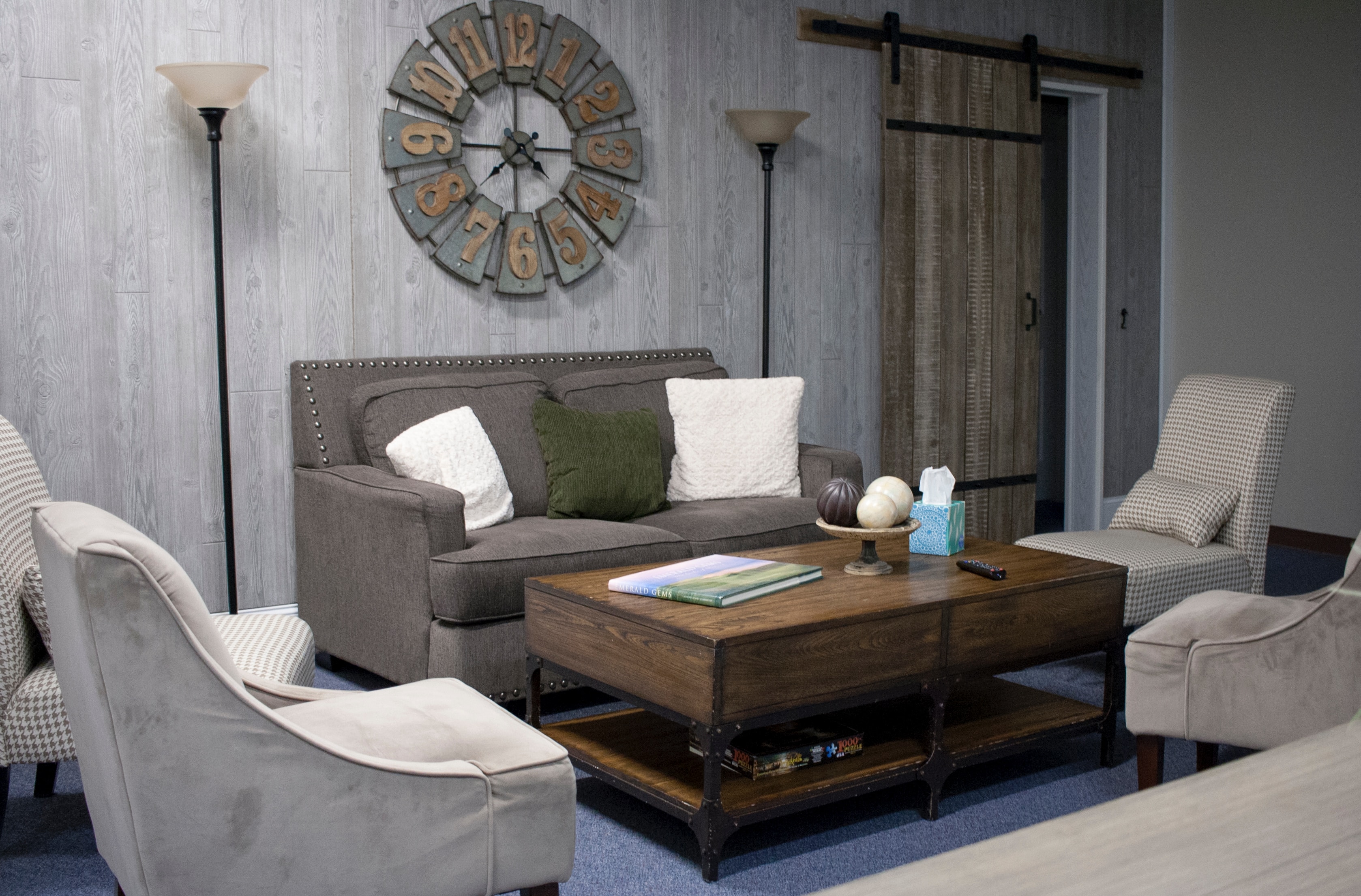|
 |
| |
|
Monday, December 9, 2019
Three Unique Types of Treated Wood and How to Use ThemThree Unique Types of Treated Wood and
How to Use Them Planning a new project or renovation? If your project includes
wood, you need to determine what type of wood is best to use. Should you opt for modified wood or treated wood? What type
of modified or treated wood is ideal for your particular project? It helps to have an overview of the different wood types
available today. Among other things, choosing the wrong wood can sabotage your project, detracting from its longevity and
structural integrity. Use this guide to get an idea of treated and modified woods and their uses. Understanding the Basics of Wood Types While
there seems to be an astounding variety of wood types and products on the market today, what you really need to know are these
three categories:·
Untreated Wood·
Modified Wood·
Treated Wood Untreated Wood Untreated wood is the raw material—plain old wood or lumber. Certain kinds of wood are endowed with
natural properties that make them better for certain types of projects. Cedar and teak, for example, have properties that
make them naturally better at standing up to moisture. That’s why people often choose them for outdoor projects like
decks and railings.Modified Wood Modified wood typically refers to wood that’s
been heated. You’ll often hear it referred to as thermally modified wood. This type of wood is increasing in popularity
because it’s both functional and eco-friendly. Usually, no chemicals are used to treat the wood. Instead, it is heated
in a 400-plus degree, oxygen-free environment. It’s literally cooked. The heat treatment permanently changes some of
its characteristics, making it more durable and more ideal for various uses. Many
people use modified wood for their decking, home siding, or even their flooring. Keep in mind that the term modified wood
can occasionally refer to wood that has also been chemically treated. If you want thermally modified wood or modified wood
with no chemical treatments, be sure you understand what you’re buying. Treated Wood Treated wood is when manufacturers apply a substance to the wood that alters its characteristics.
For instance, the treatment (often a preservative) can help the wood stand up to moisture, rot, and pests. Pressure-treated
wood falls into this category. During the treatment process, intensive pressure is applied to the wood to remove oxygen. Then,
it’s infused with chemical preservatives to protect it from rot and pests. Treated wood is used for projects that can
include pier pilings, decks, interior framing, outdoor wooden walkways, porch railings, fencing, and more. Your contractor
can help you choose the ideal treated wood for the project you have in mind. While modified and treated woods won’t
last forever, they are popular options because they last longer and perform better under various conditions. Use the following
information to help you select a wood type for an upcoming project or home renovation. What
is Charred Wood/Shou Sugi Ban? Charring wood is a weatherproofing treatment
that helps protect the wood from moisture and insects. This practice originated from the Japanese technique of shou sugi ban,
which chars the woods exterior using a light open flame. The Japanese have been using this technique since roughly the 18th
century. They tend to use cedar for the procedure because it’s always endowed with natural moisture-resistance properties. Shou sugi ban and charred woods in general function
well when it comes to standing up to moisture and insect pests. However, they’re often favored because of their aesthetic
appeal. In fact, many interior designers and architects around the globe are opting for charred wood because of its unique
appearance. Typically, charred and shou sugi ban woods are used for siding
panels. Just keep in mind that not all woods are ideally suited to this technique. Open-celled timbers tend to work best.
Also, be sure you purchase from a distributor that is experienced in this practice. If the charring process is performed incorrectly,
the wood won’t weather properly. In Japan, examples of shou sugi ban have withstood outdoor elements for more than 50
years, but it’s not quite certain how long other charred woods can hold up without information from the manufacturer. If you’re planning to use this wood to side your home, garage, shed, or other outdoor
structure, it’s a good idea to consult your contractor. It’s clear that sourcing this wood from a reputable vendor
is key to the success of a project. If you intend to use this practice to treat wood for a piece of furniture or other indoor
feature, DIY is a viable option. What is Shiplap Wood? Because it’s commonly misidentified, shiplap is another
wood type best sourced from your contractor. Shiplap is a type of wooden board that is most commonly used as exterior siding,
but it can also be featured indoors as paneling. You’ve most likely seen shiplap adorning barns, sheds, and various types of outbuildings. Rustic and affordable,
shiplap is a popular option for people who favor rustic or early American styles. Shiplap is celebrated for its ability to stand up to weather conditions. This is why it’s
often featured in areas with four-season climates or coastal areas like Miami that are subject to sea storms. The
wood can expand and contract without much effort, so it’s a great choice for outdoor projects. Shiplap is typically
installed in horizontal planks and fastened with rabbet notches. The boards slightly overlap, which is why this wood has a
reputation for being “watertight” and historically featured on ships. If you intend to use shiplap as a waterproof barrier, be weary of shiplap imitators. Planks
that aren’t installed with rabbet notches and nailed in place don’t deliver a watertight barrier and are not true
shiplap. If you’re planning to install this in your living room as a part of a new piece of furniture or interior design
feature, you may be able to get away with a DIY installation. However, if you’re installing it on your exterior or in
a moisture-rich setting like a bathroom, it’s a job that’s best left to professionals. What is Reclaimed Barn Wood? Reclaimed wood is a trendy option for home design today. However, unlike trends that come
and go, reclaimed barn wood has staying power. Salvaged from other buildings, the wood has stood the test of time and frequently
boasts a rich patina that enhances its antique look. It is essential to choose wood that isn’t warped. Also, many vendors
today sell reclaimed wood that’s been heat-treated to make it even more durable and pest resistant. Today, people use
reclaimed barn wood for both interior and exterior projects. It’s ideal for porch posts, mantelpieces, stair rails,
flooring, and more. If you’re still uncertain about what
type of wood to choose for your upcoming renovation, consult with your contractor. A professional who works with these types
of wood can advise you about the best options for your project. You can also rely on your contractor to source wood for you.
It’ll often be at a cheaper rate than you can find on your own. Remember, it’s important to select the right type of wood for your project or you risk it failing. There
are many, many options available today. It’s important to understand what you need for a successful project outcome. Originally Published on Redfin
   
2:07 pm est
Monday, January 29, 2018
Naily
Roof Board Process Everyone who sees our
Rustic Pine Naily Roof Boards wants it. Sometimes even if they originally came for the Weathered Gray Siding. We believe we
were the first ones to even reclaim this material do to the labor intensity of pulling all the nails and we have perfected
our system of denailing and cleaning this material over the years. However we have come to realize that our customer have no idea
how much work we put into this particular material compared to our other products. So here is the process. After all the metal roofing, cedar shake, or asphalt shingles are removed from the roof while trying
to not damage these boards or fall off the planks are as carefully removed from dangerous dizzying heights. Sometimes we drop
the whole barn or use the forks to get at these more safely but then we lose some stock. Then they are gone over at the barn site as carefully as possible to pull any nails that may damage the next board during
transport. Called surface denailing, helpers do not have to pull anything not sticking up above the face of the board at this
time. Even though we pull buckets loads at this point there are still plenty of nails either bent over or broke off below
the surface that they cannot see due to 150 years of dirt. Stacked into a nice 4’ bunk for
our forks and warehouse layout to work efficiently this material is transported to the warehouse and unloaded inside. This
actually takes some time working with random width boards to keep it around 4’ wide going from longest to shortest in
length. Then on a sunny dry day (very rare in Michigan) this material is loaded onto some heavy
duty saw horses where we begin to wash the dirt off while critiquing each board on its quality. We generally start on the
back side with nail sets painstakingly backing out hundreds of nails till your fingers are sour as we wash the boards to reveal
them. We then go over that side with a wide putty knife that hits anything sticking up which tend to be a whole lot of more
nail tips we missed. The board is then flipped and washed on the other side as we begin
pulling hundreds of more nails that we exposed or popped up from the other side. What customers don’t realize is most
of these are bent over or broken of points with no heads from when the barn shingles are removed with a shingle shovel for
reroofing many times over the years. We use special tools to lift or pull them. We even try to pull any below the surface
at this time and are pretty good at it. There are always some left behind that are too deep to reach from either side without
damaging the look of the material. Again we go over it with a putty knife to catch a bunch we have missed by eye site. Then
a final rinse on both sides to wash out a lot of rusty dirt from the now empty nail holes. There
is a lot of careful blending and blasting particularly dirty spots while not leaving power washer marks behind. Our power
washing system takes a long time to master to not leave any unappealing uneven marks on the boards. And we try to trim any
bad ends that were missed at the barn site at this time. The boards are then leaned up to dry shortest
to longest otherwise the sun is blocked by the longer boards. They must be flipped and rotated to get them completely dry
in one day so we can put them away before it rains, snows, or dews here in Michigan. If they are stacked wet like our competitors
they will mold and smell bad. When we are done our roof boards smell wonderful. If we cannot get them dry the labor goes way
up by us having to sticker them inside which means stacking them with battens between them to air dry. This also means we
have to unsticker them later and restack them for final sale. In the winter we always have to sticker them and dry them with
heaters, fans, and a dehumidifier. Preferably while the boards are leaned up drying we measure
and describe each board so we know exactly what we got. We take the time to put that info into our inventory list so you know
exactly what you are getting when you purchase lumber from us.
Now you know why we have to charge enough for
this material. This is by far one of our favored products by customers with the least amount of profit on our end. We believe
our competitors are only selling this material dirty which would also leave a lot of broken nails that can scratch and damage
the next board plus. At the very least they are not taking the care and time we do here at TLC. Thus the name. Thank you for
reading.
4:26 pm est
|

|
|
2019.12.01 |
2018.01.01

|
|
|
|